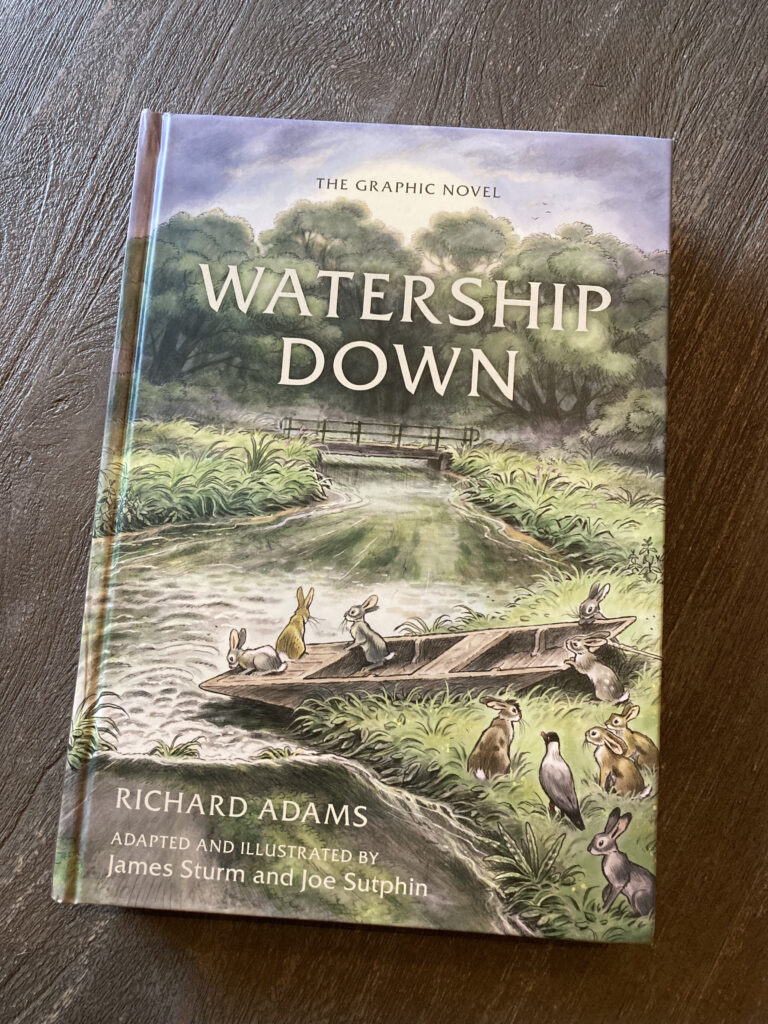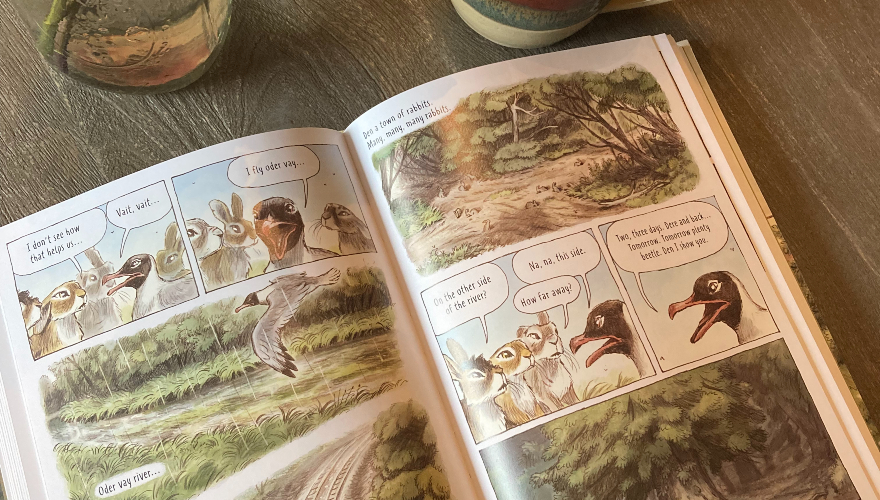When I visit a place, taste a food, or reread a story from my childhood, I often find the experience doesn’t hold up to the memory. Yes, there’s something nostalgic there, but Pizza Hut just doesn’t taste as good as street vendor pizza in Italy, Chuck-E-Cheese isn’t the gigantic wonderland it once seemed, and those Nancy Drew books are all pretty formulaic.
But occasionally I’ve stumbled upon something I loved as a child and found it has more breadth and depth than I realized. Like the new Narnia in The Last Battle, it has grown bigger along with me.
Watership Down was one of the most formative stories of my childhood, though I never actually read the book until I was an adult. Instead, it was one of the few go-to movies I requested from Blockbuster on repeat, knowing I could lose myself in the familiar story (while also hoping my mom didn’t walk in on one of the bloody battle scenes). I can’t say I ever thought too hard about what the story meant, I just new it resonated with my little heart in a powerful way.
So to say that I had high hopes of the new graphic novel version of Watership Down adapted by James Sturmish and illustrated by Joe Sutphin is an understatement. I knew the illustrations would be beautiful—Sutphin is a master—but would the story hold up to both my childhood recollections and my adult experience of the novel?
Actually, it exceeded both. This new version held a magnifying glass to the essential beauties of this timeless story.
Katherine Paterson has some wise things to say about storytelling. She writes,
“The challenge for those of us who care about our faith and about a hurting world is to tell stories which will carry the words of grace and hope in their bones and sinews and not wear them like fancy dress.”
That’s where the goodness of this story is found. In its bones. Richard Adams was a Christian, and he paints a beautiful image of community among his rabbits. Sure, the story is also an adventure with dangers and clever plans, but at its heart, Watership Down is about the characters. There’s Hazel, the nobody who was born to lead. Fiver, the powerless runt who has wisdom beyond his years. There’s Dandelion the storyteller and Blackberry the inventor. Bigwig is tough and street smart and Pipkin is tender.
But it’s also a book about the stories that make us strong and brave. Dandelion is forever telling tales about El-ahrairah, the first rabbit. He’s a trickster who’s willing to do whatever it takes to care for his people. Yet when Dandelion tries to tell a story in a warren whose rabbits have become fat and selfish, they won’t hear it. “For who wants to hear about brave deeds when they are ashamed of their own?” Those stories of brave deeds point a spotlight on the truth. They are the kind of stories I want to tell.

Despite the fact that my 8-year-old self loved this story, I would urge parental guidance for kids under twelve, though it may be fine for certain younger kids. There is some language as well as bloody flighting, especially in General Woundwort’s cruel warren. But you mustn’t pass up this beautiful story once your kids are ready, because it holds so much goodness, too.
I can see why my childhood self was so lost in this story. Even now, I want to grow up to be like the rabbits of Watership Down. I want to see the best in other like Hazel. I want to trust my gut like Fiver and admit my mistakes like Captain Holly. I want to use my gifts to help my community like Dandelion and Blackberry and to be willing to stand up for the weak like Bigwig. And, like Hazel, when the end comes, I want to welcome it as finding the home I’ve been longing for.
- Midsummer’s Mayhem: Shakespeare, Baking, Magic - April 17, 2024
- Review: God Speaks to Me - February 28, 2024
- Review: Watership Down, the Graphic Novel - October 30, 2023

Leave a Reply